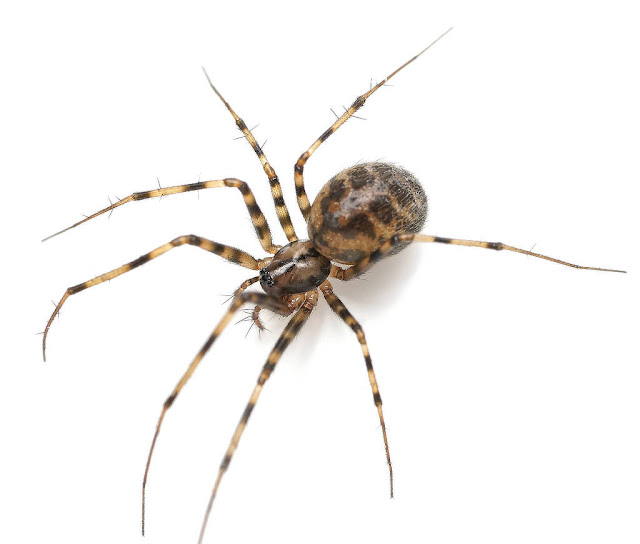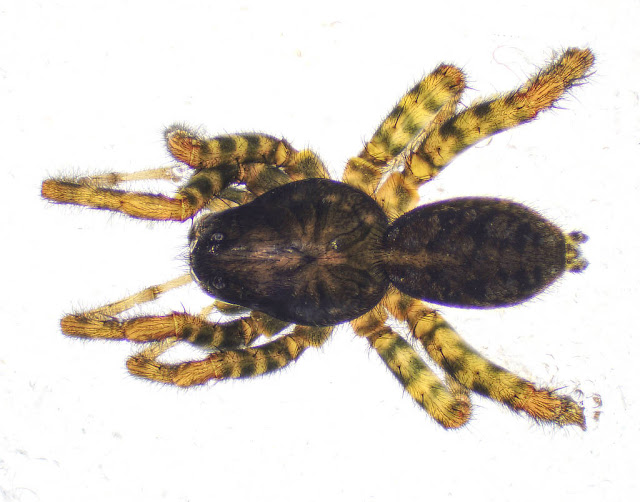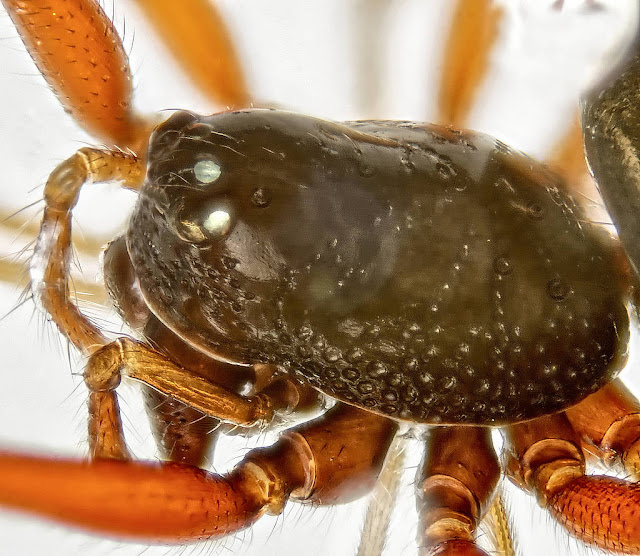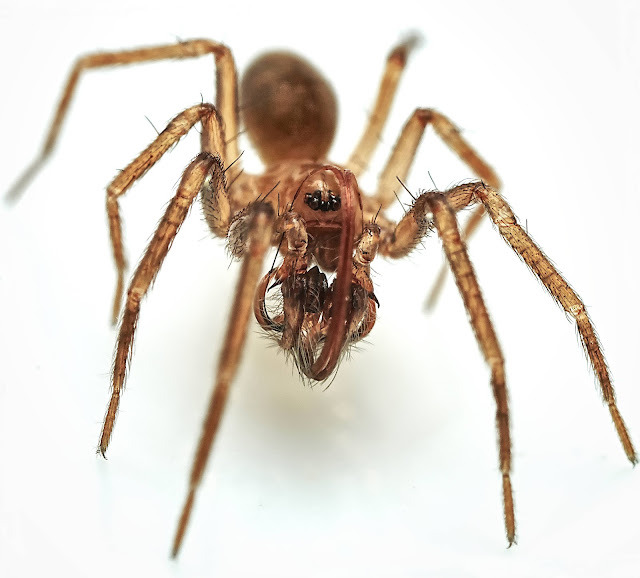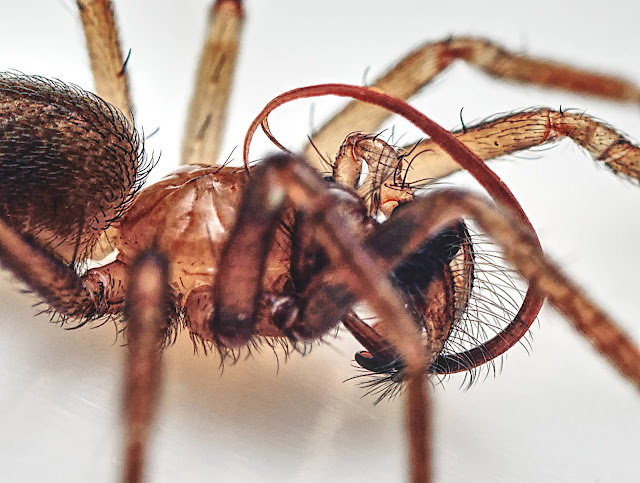I would sum up 2022 as quality over quantity...
I haven't been able to spend as much time as I would have liked on spidering this year, but I'm still pretty pleased with the outcome. The weather has been challenging with alternating exceptional droughts, rainfall and the highest temperature ever recorded here. Although the number of specimens I recorded was well down, I managed to make some nice finds. Here are my highlights.
Megalepthyphantes sp. near collinus
The year started well in January when I was refurbishing an old garden pond into a bog garden and found a specimen of
Megalepthyphantes sp. near collinus which I eventually managed to identify with help, a horticultural import I suspect and the first record for VC55.
Leptorhoptrum robustum
This Linyphiid turned up on a streamside survey in March as part of a local river restoration project, one of two projects to which I have devoted field time this year. An inhabitant of the local sewage works, these spiders work their way downstream and I have found them at several places along the watercourse, showing just how much restoration is needed.
Mastigusa macrophthalma
I "refound" the "Charnwood Spider" in VC55 after a gap of twenty years as part the other large landscape project I have been contributing to this year. The first specimens turned up in March at one of the species strongholds, but I was subsequently able to find it at another site where it had never been recorded. More importantly, I was able to confirm that it was not present (following on from decades of arachnological work) at quite a few other sites which look eminently suitable but where it is just absent. I only recently worked out why this is, so I think this quest will be continuing next year.
Textrix denticulata
This attractive spider was a by-product of searching for
Mastigusa. This species is not common in VC55, or at least it is not commonly recorded, but I found it at a number of different locations, partial compensation for drawing a blank with
Mastigusa on most field trips.
Mangora acalypha
This orb-weaver has only spread to VC55 very recently and the few records have been from a garden so it was a pleasant surprise to find it on Gorse in a rural location. This one is clearly on the move.
Arctosa leopardus
I found this attractive wolf spider in a riverside sample in May when I was desperately targeting damp places after the spring drought. Much of my time this year has been taken up slogging though hundreds of pitfall trap samples from a large 2021 survey at Rutland Water which turned up several specimens of this species - the first records for VC55. My specimen came from the opposite side of the vice-county, so it is clearly established on different drainages and it is strange that this species has not been recorded before.
Collinsia distincta
This Linyphiid came from the same riverside sample as Arctosa leopardus, making this a productive trip. The first record for VC55 for this species.
Lophomma punctatum
As if two weren't enough, the same sample also produced a specimen of
Lophomma punctatum. This spider is well known from the County but not often recorded so it was a nice addition.
Oonops domesticus
Last and very definitely least (size-wise!),
Oonops domesticus paid me its triennial visit in October. I only seem to see this spider in my house every three years or so but it is always a welcome sight - one of my favourites.

